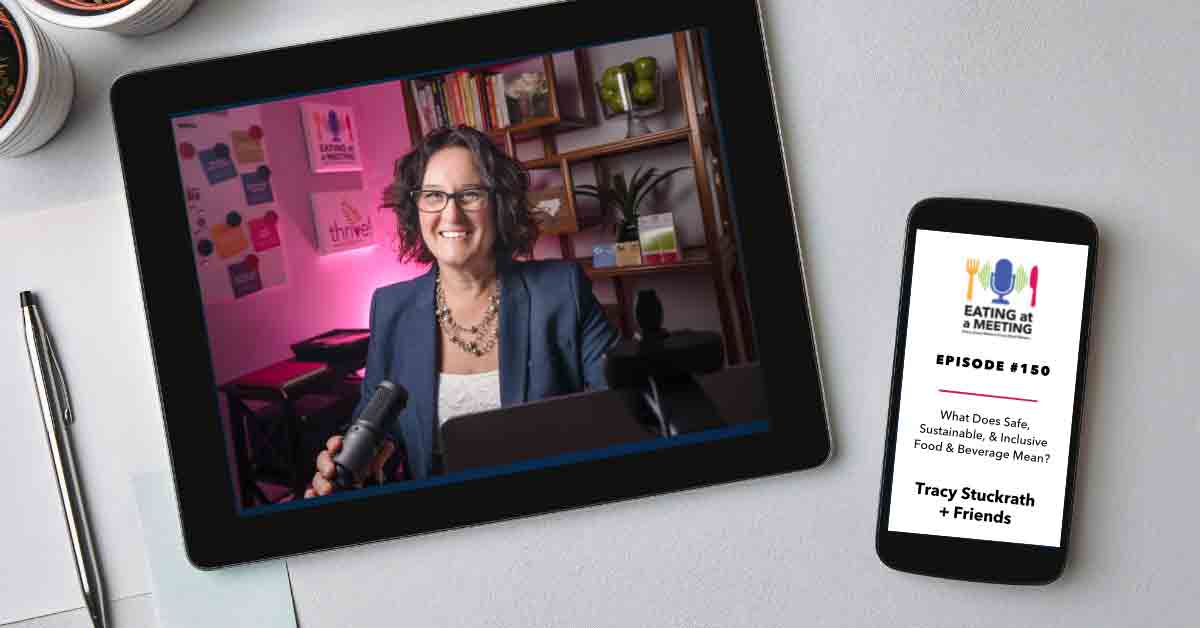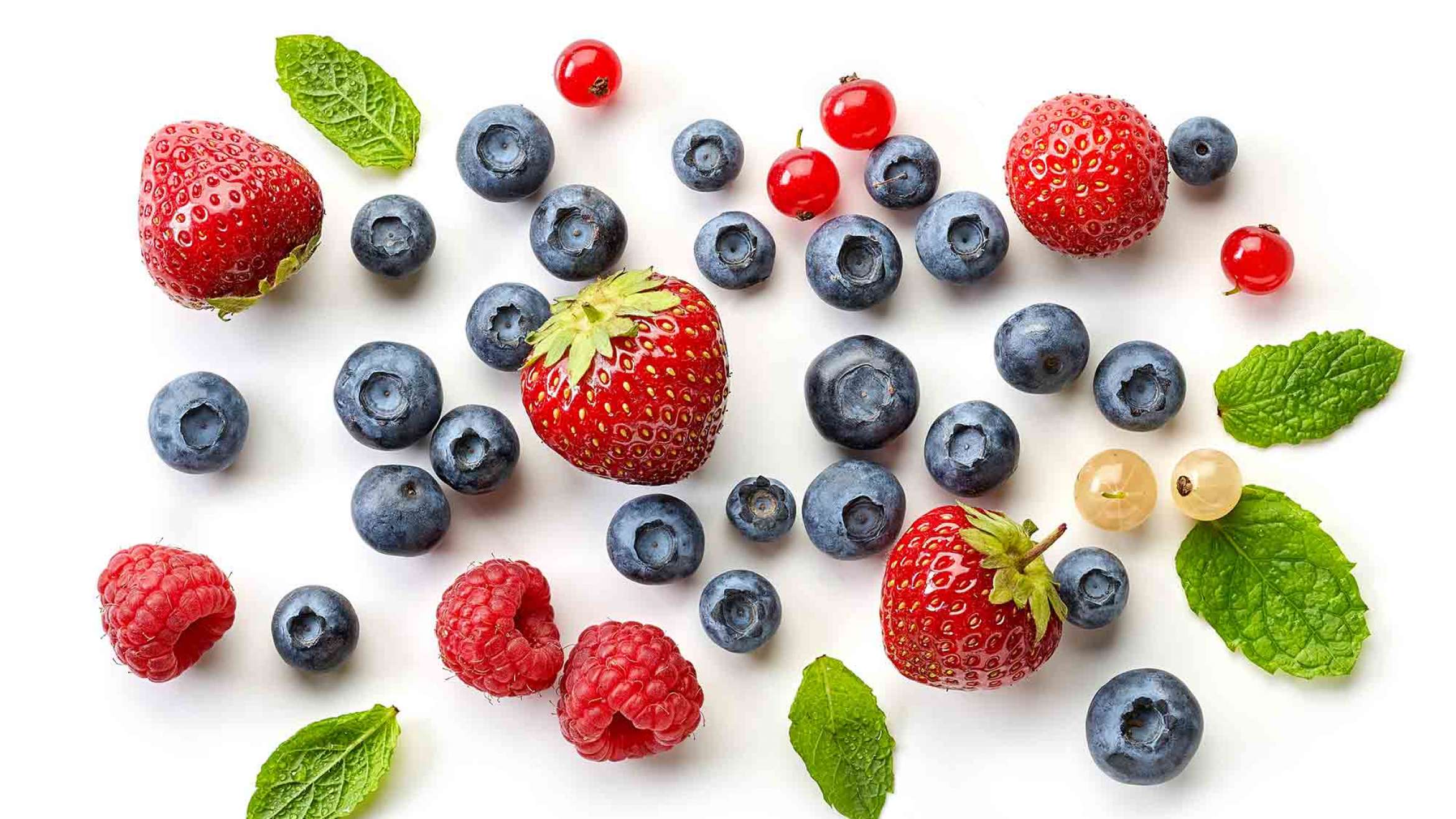What Does Safe, Sustainable & Inclusive Food & Beverage Mean?
Eating at a Meeting Podcast Episode 150
Safe, Sustainable & Inclusive Means Different Things to Everyone
In this episode of Eating at a Meeting, Tracy looks back through 150 episodes to find how her guests’ answer the question, “what does a safe, sustainable, and inclusive food and beverage experience mean to them.?” From making a conscious effort to think about it to understanding where your food is from to where you’re getting it through allergy safety and making sure that everybody has a seat at the table. Hear Tracy reading excerpts from her guests and directly from the guests.
Let us know what YOU think/feel a safe, sustainable, and inclusive food and beverage experience is by clicking here.
You will hear from Kyle Dine, Molly Crouch, Aurora Dawn Benton, Brian Petersen, Joan Eisenstodt, Jenique Keyatta Holder-Mincey, Chef Dominic Teague, my long-time friend Gagan Levy, Gwen Smith, Donald Contursi and Nora Burns.
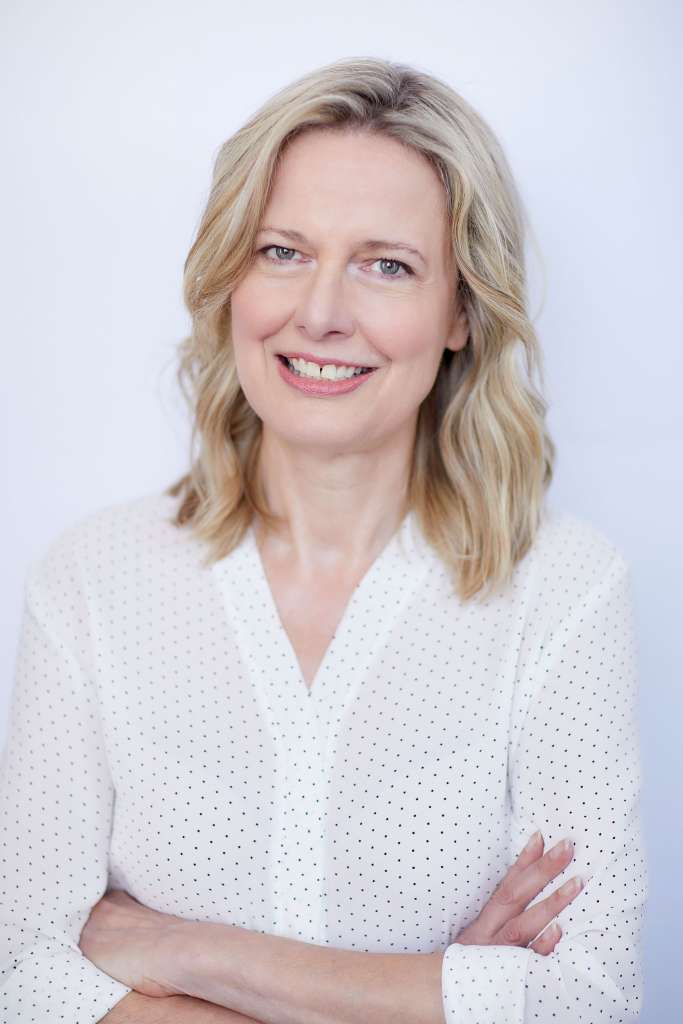 Gwen Smith
Gwen Smith
Editor, Content Chief, Allergic Living
To me, safe and inclusive reference a food-service establishment being able accommodate serious food allergies and celiac disease. Includes a manager/some staff with allergy training & understanding of cross-contact. Being able to dine out safely is so important to a good & full life. Inclusion matters. For Allergic Living, we’ve interviewed many food services pros. The good ones get it, but we still see much room for improvement. FYI: https://www.allergicliving.com/2017/06/08/special-report-what-restaurants-are-getting-right-and-wrong-on-food-allergies/ Re sustainable: Obviously, so important and the UN goals illustrate the urgent need for change. I am encouraged by the no. of restaurants that now serve local produce on the menu, I eat regularly at one that supports local farmers and spells out their more sustainable farming practices. Simple, delicious meals are also more easily made allergy-friendly.
Here more from Gwen in Episode #141
Kyle Dine
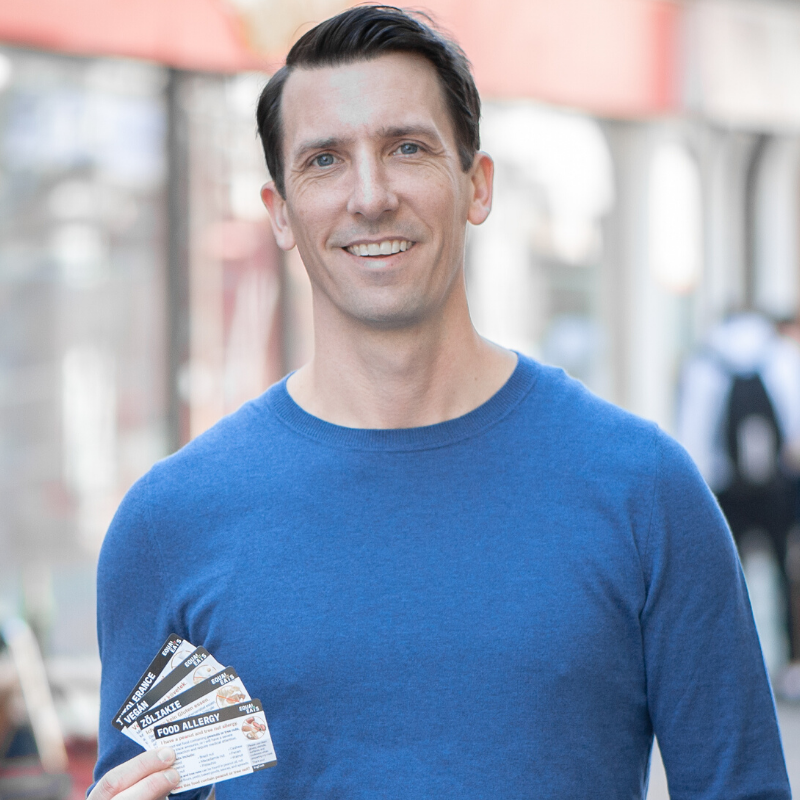 Founder, Equal Eats
Founder, Equal Eats
I think it’s one where everybody feels comfortable. And I think for anyone with a dietary restriction, comfortable as a hard, a hard target at times. So it’s it’s really an experience where you feel safe, you feel the information has been provided to you that you need you feel welcome. And you feel fulfilled at the end of it. So at the end of the day, it’s it’s providing the comfort that gives you confidence to dine safely and well….It’s, you know, when you’ve set that system up, it’s done. And then people will come back and they’ll tell their friends and things will grow. And I always think, you know, the places that cater well to people, dietary restrictions need to be rewarded. It’s not easy. It’s more there are more steps, but it is doable. So absolutely, it needs to be sustainable in that it’s a cycle of being rewarded for that work.
Aurora Dawn Benton
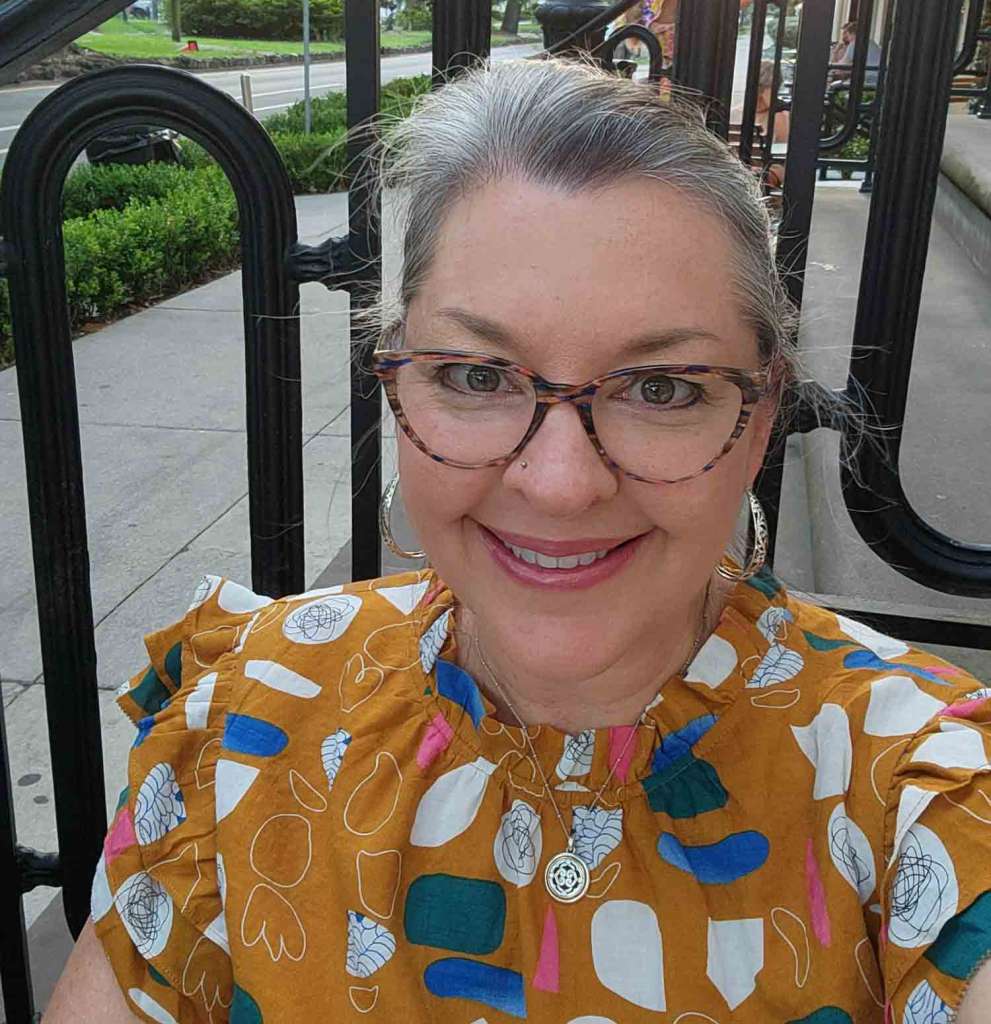 Chief Change AgentI, Astrapto
Chief Change AgentI, Astrapto
I guess I would have to say that I probably think a little bit more of the inclusive and sustainable aspect from the perspective of the location. So sort of honoring the local terroir, the you know, flavors and the people of the area, and making it sustainable beyond just your building in your event. I think that’s a big part of it.
And I guess, a way that I would say kind of loops, all of that together is just transparency. Right? Like, if if you if you let people know how, how the food is safe, and how it’s inclusive, and how it’s sustainable, if you’re just reveal the, the details, I think that that goes a long way, right? Because a lot of the stuff we do is already safe, because you’re technically you shouldn’t be able to serve food if it’s not safe, right?
And I get that your definition based on your personal experiences, Tracy might be a little bit different. Because say safety can extend to you know, allergens and things like that. But again, transparency, if you know the ingredients, this isn’t a problem, right? So I think that I would like to see more communication have to guess about what they’re eating, where it comes from, why it’s special, how it’s made. And again, this goes back to that digital piece.
When you go to most food service, you see little paper signs right in front of the food, you know, and I’d love to see more digital presentation, whether that’s through an app or on monitors or QR codes on websites or whatever so that people have more of a live engagement with what what am I about to eat? How was it prepared? What’s the farm it came from, you can just do so much with just even a 32nd video about food that you’re serving. And I get that that does add some labor and technical skills and things but I think that it could go a long way for for creating the safe, inclusive and sustainable food and beverage.
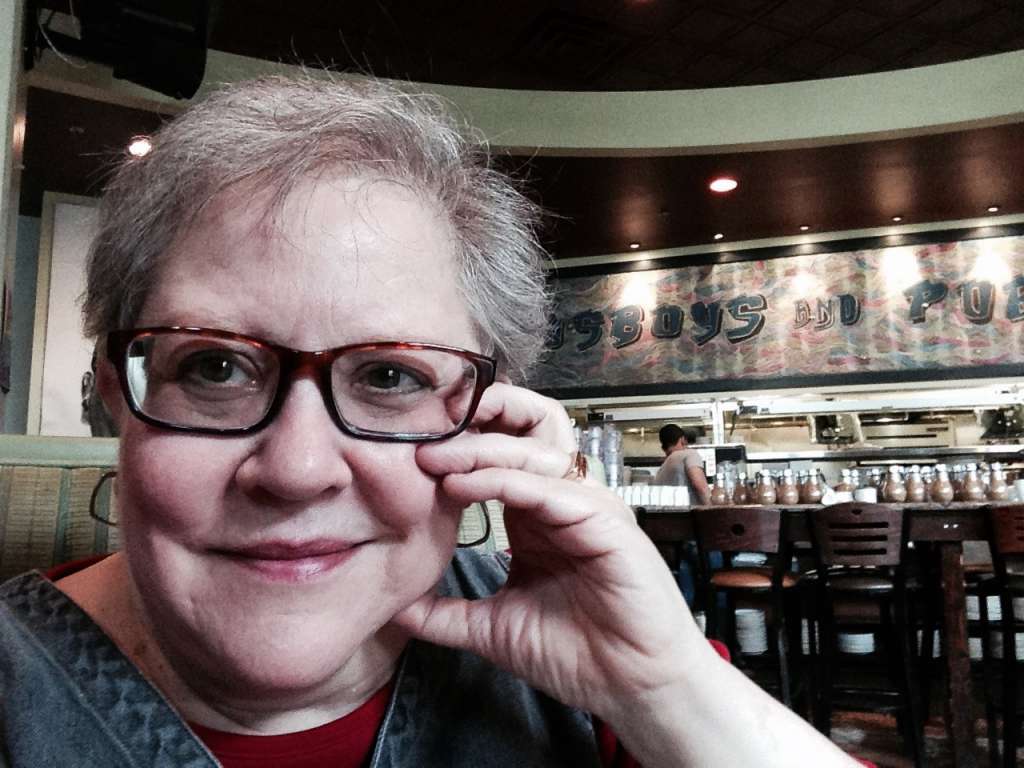 Joan Eisenstodt
Joan Eisenstodt
Principal, Eisenstodt Associates, LLC
Conscious intentional effort in asking questions of participants, food provider, and servers in preparing for events, and in follow through to ensure each party’s needs are met and no one is left out by omission or intent.
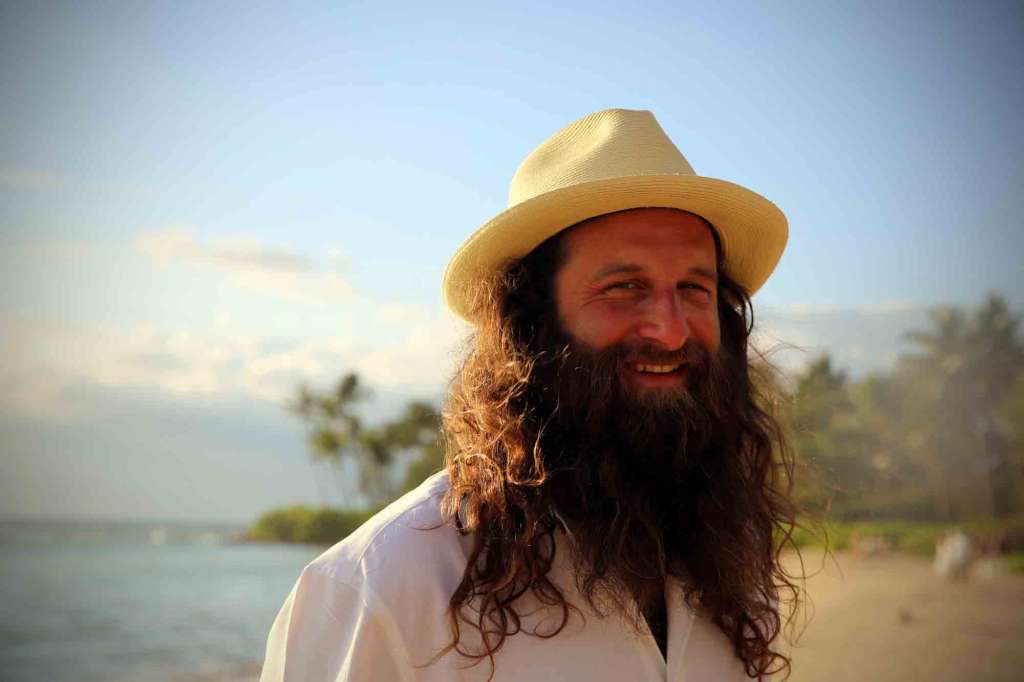 Gagan Levy
Gagan Levy
Founder and Creative Director, Guru
It means that people have the ability to manifest their values in what they’re eating. And that means taking care of people and the planet in the way those those products were created and sourced, it means they’re regenerative. And that hopefully how they were grown carbon was taken out of the air and put back into the soil where it belongs. It means they’re organic, it means they’re non big plug for Non GMO Project to where, uh, you know, our client of ours, it means that they’re giving back to their local communities that the packaging is thoughtful, and hopefully compostable or renewable in some way.
You know, I could keep going. But I think you’d get you know, that, that, that people at that at that company are taken care of, and hopefully they’re a beat, hopefully, there are 1% for the planet member kind of, you know, for me, it’s like, there wouldn’t even necessarily be a brand name. It’s just all certifications and, you know, values all over that brand. That’s, that’s what’s most important to me.
And it really says a lot when someone invites me to a meeting, or a convening and how that meeting are convenient. Like, yeah, I mean, all the choices in that are intentional. And maybe there’s those of us that are just a little busy to get so intentional about it. And I’ll like and with this, the Dalai Lama always said, you know, if you don’t have 10 minutes to meditate, you probably need 20. So, you know, for those of us that are so busy that we can’t think about it, maybe like really put a spot in your calendar to, to just like sit and think about that your choices as a business and as a consumer.
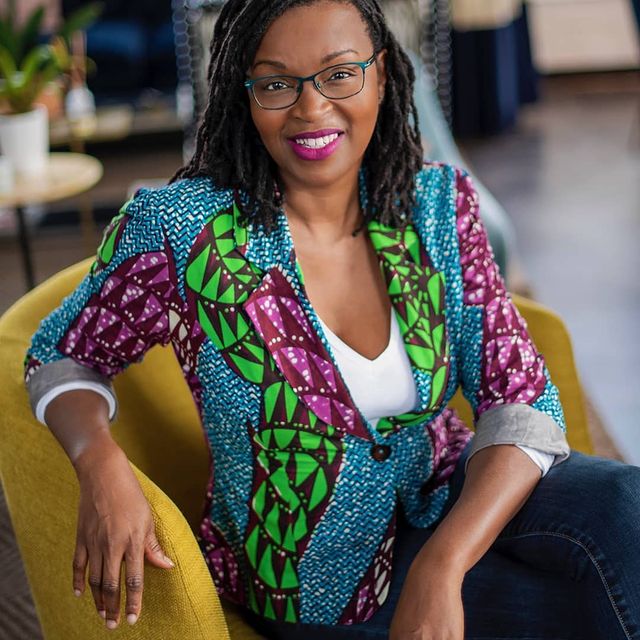 Keyatta Mincey Parker
Keyatta Mincey Parker
Owner and Operator of A Sip of Paradise Garden and Pictures and Cocktails
“For me, it’s knowing where your ingredients come from, it’s supporting local growers of all kinds, making our own things instead of having to buy.”
Molly Crouch
Corporate Director of Sustainability, Sodexho Live!
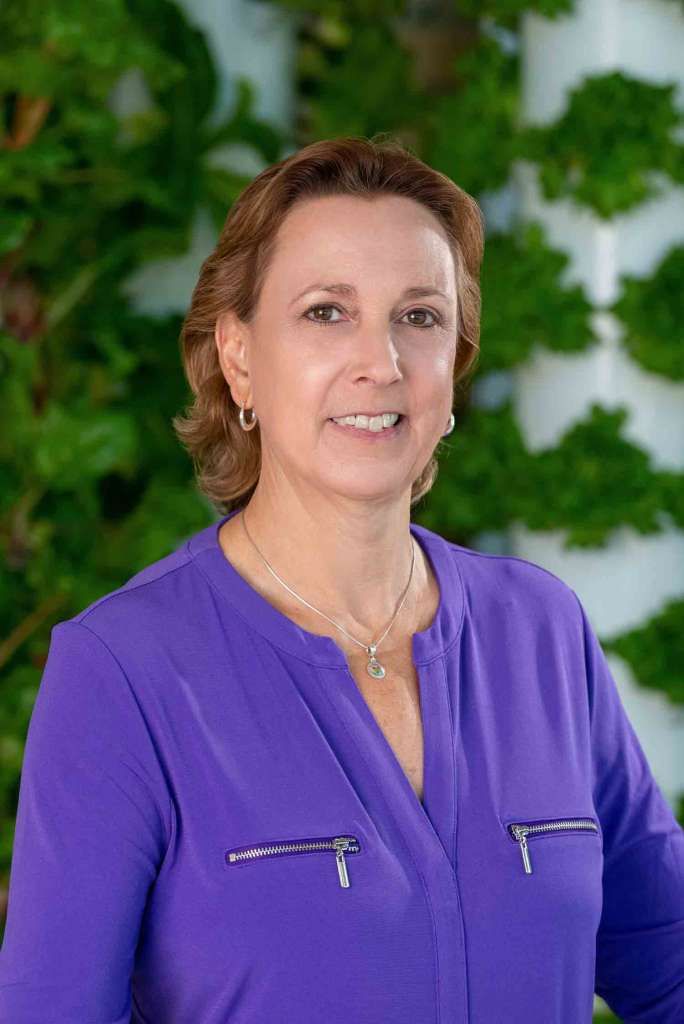
So to me, you know, safe and sustainable has changed its pandemic, right. So safe before just, you know, meant that you made it in the building, right? And you were okay, or you made it to your seat and you’re okay, safe now is different. So I think just for me, I think the I use the Hard Rock slogan when I when I put this to you, but like the level survival concept, and recognizing that everybody is there for a different reason. And everybody has feelings about certain things, and there’s and that takes nothing off of you to try to help them feel more comfortable. And so I I look at it, as you know, if something will make somebody more comfortable, then is it really hurting you in the process. And then you know, from a food perspective, I look at as trying to trying to keep those carbon miles down or at trying to keep the transportation miles down and trying to keep the food as close to the to the ground to your table as you possibly can and then helping those farmers along the way. So to me that’s, that’s what I consider a sustainable event.
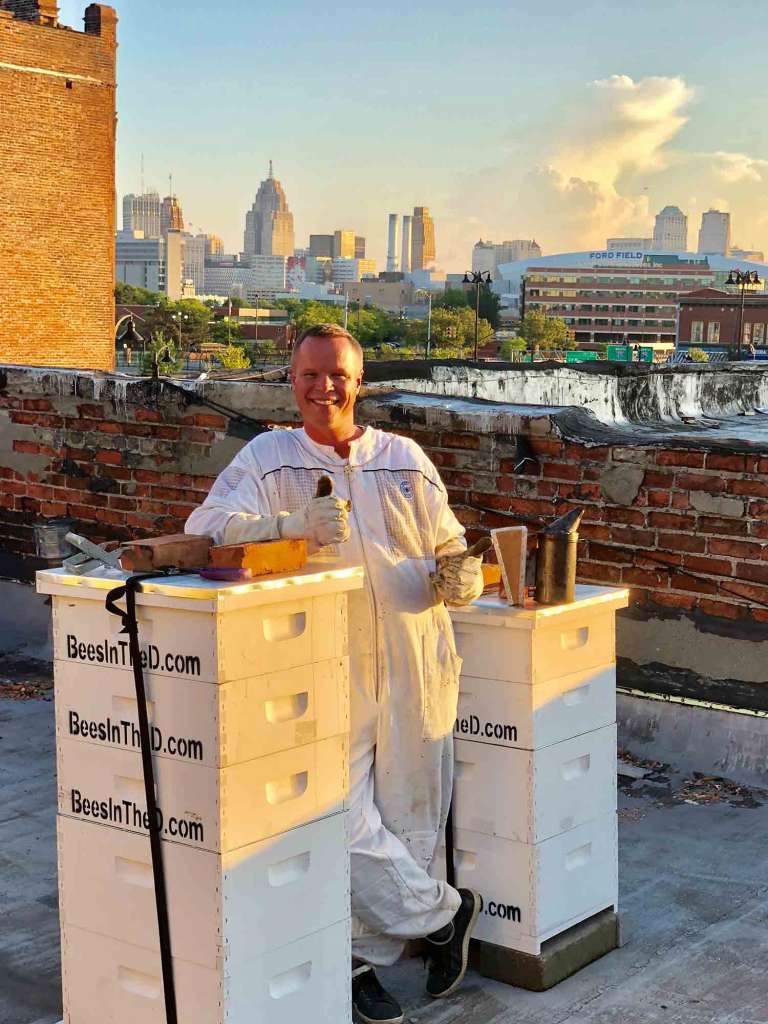 Brian Peterson
Brian Peterson
Founder, Bees in the D
I think the main thing for me is to remember that, you know, when we think of food and beverage, we’re thinking of that food and beverage that’s right in front of us. But to remember that it starts way before that. And just like you wouldn’t want chemicals on your dinner table or around your food. Then why would you want those kinds of chemicals around your the beginning of your food? Does that kind of make sense? So think back to the roots of where that food is coming from. And make sure that we’re also having, you know, sustainable and safe practices there, as well as where the food is being served.
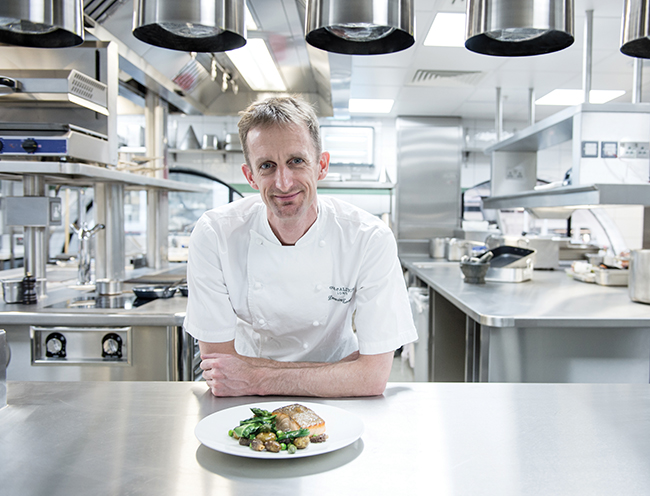 Chef Dominic Teague
Chef Dominic Teague
Executive Chef, One Aldwych Hotel
Somewhere where the customer is completely relaxed and confident in the knowledge that the operation is taking what they do seriously. The team are actively engaged with their product, and it feels they are passionate talking about it, and delivering the product.
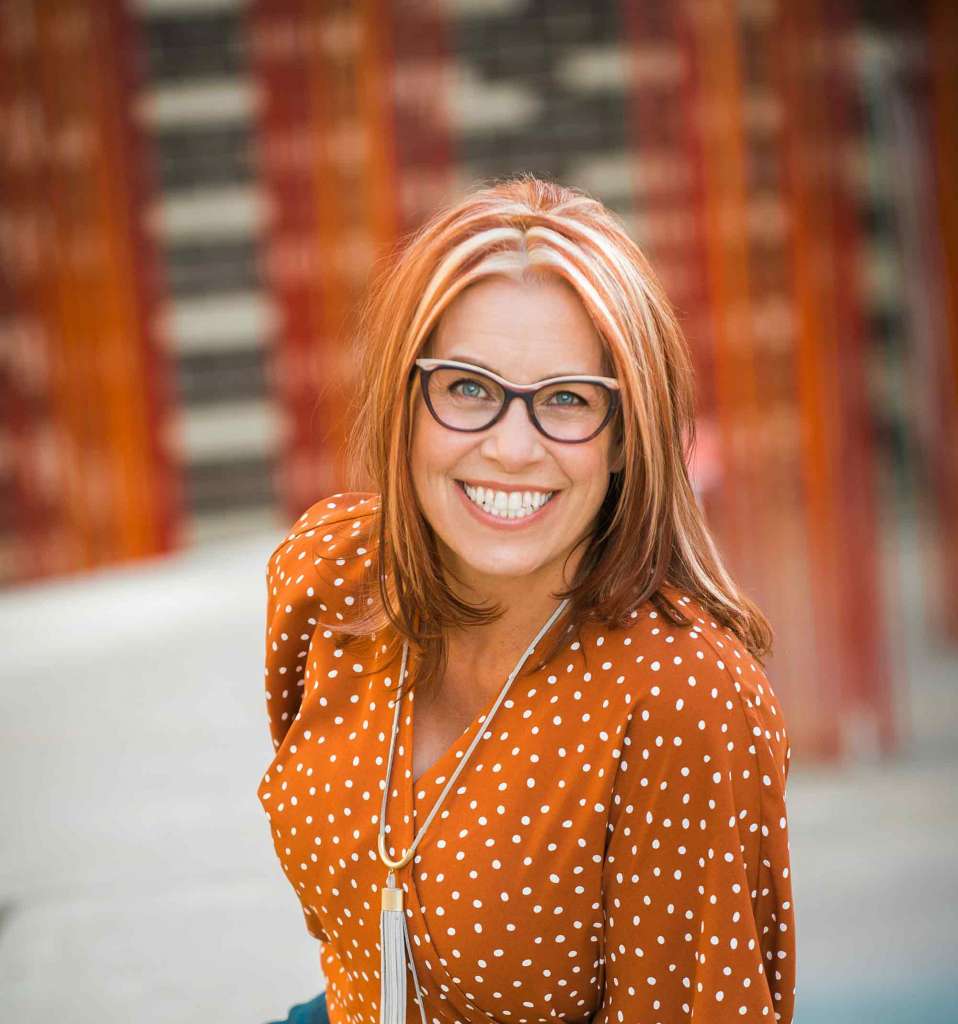 Nora Burns
Nora Burns
Speaker and Workplace Culture Expert, The Leadership Experts
I could play with just that question for for a solid 45 minutes, by the way, because there is some variation based on the situation. But for me, it means that there’s there’s no food, there’s no shaming around it, right? Like, we shouldn’t feel bad about what we want to eat or can eat or need to eat in order to sustain our health. And so there’s no shame around it, that there are a variety of options and choices without us having to make special requests without having to be the person that comes over and says, Oh, do you happen to have a version of that that is gluten free. That is, you know, that is, you know, without nuts, that is what have you to make it easy, people should be able to sustain life fairly easy. So for me, it means that we can easily sustain our life and make sure that we are in a learning space, because usually when I’m dealing with food, it’s in meetings and events or corporate settings where we need to be learning and productive. Where we can do that without it being a hassle for us as the as the person who needs to nourish our bodies.
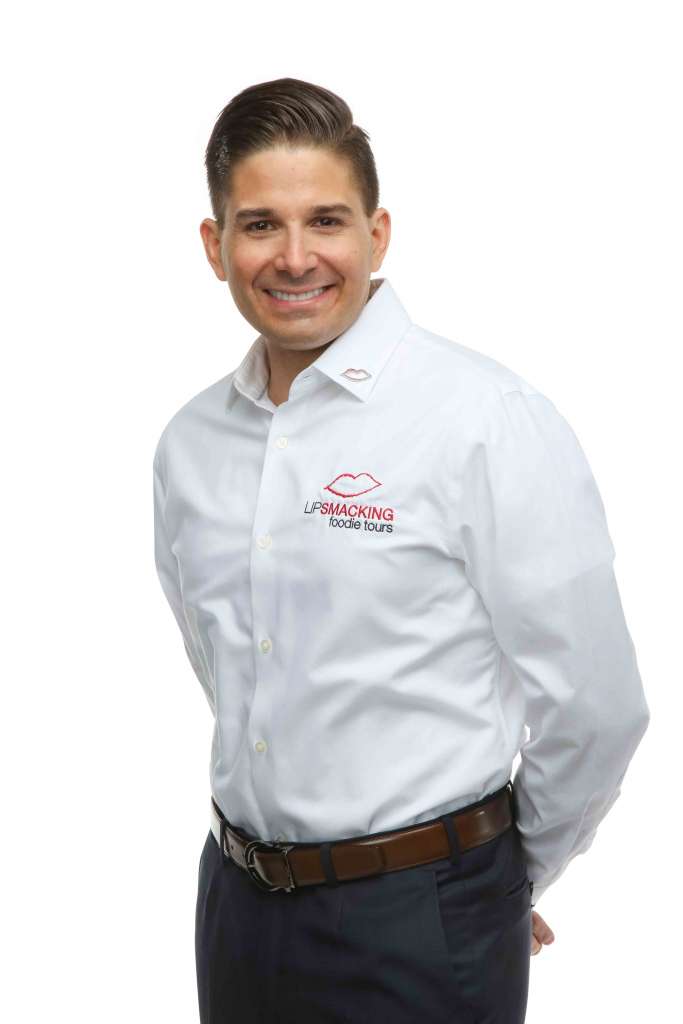 Donald Contursi
Donald Contursi
President, Lipsmacking Foodie Tours
Communication, taking the time to sit down and not making it an afterthought. If you just leave it up to you know, the moment, it’s, it’s not, you’re not taking the time to ensure that you’re going to exceed expectations. And what I mean by this is things that could happen, like, you may not think of this because of the dynamic of the tour that we offer the curated experience, but, you might if you don’t communicate properly, you might end up getting accommodations where you’re serving beet salads at each restaurant, and so you want to let the restaurant partner know, we’re already featuring beads or, we’re already doing, whatever it might be this way you don’t duplicate dishes, one of the other things is the details.
So, most of the time, people with restrictions are, they they are accustomed to waiting until everybody else is served and then they’re dealt with as if it’s a nuisance. Well what I like to do is I actually like to serve them first. First, it’s awesome and it makes you feel special. And as long as it’s a beautiful spread that you’re proud of everybody around, you will look at your dish and go, Wow, you know, maybe I should have said I was vegetarian that looks amazing. So rather than you know, and people won’t start eating until everybody served, and you don’t want to feel guilty for having a restriction, and others are getting their food get cold, because you’re having to wait for your plate. So we serve you first. This way, you know, you it’s all taken care of. And nobody is trying to serve people the wrong items, because it’s already taken care of, and it’s out of the out of the, you know, element. So, so just putting thought into it.
Links:
Check out other featured guests on the Eating at a Meeting podcast
Eating at a Meeting is part of the Nitty Grits Podcast Network.


